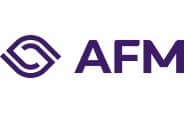
Digitally more accessible: benefiting consumers and sectors
Soon, i.e. as of 28 June, financial institutions will have to comply with the European Accessibility Act (EAA). Its objective is to ensure that people with disabilities can also independently take out (financial) products and services online. Websites and apps, for example, will have to be made accessible or more accessible. The AFM has already observed good examples at several financial institutions. We call on those who still have much to improve to step up the pace. In our EAA update (download) we clarify our expectations of market participants.
In short
• Aim of the directive: inclusion and equal access
• Research and continuous improvement
• Efforts, but also opportunities for institutions
Aim of the directive: inclusion and equal access
There are approximately 5.5 million people with a disability living in the Netherlands (32%). In Europe, this number stands at around 101 million (27%). The Accessibility Act aims to improve inclusion and equal access to products and services within the European Union. The EAA‘s scope is broad and will mostly apply to providers of financial products and services. For financial institutions, this means they need their online services to be accessible to everyone, including people with motor, vision, hearing or cognitive disabilities. The AFM is the competent authority for the supervision of the online accessibility of banking services and other financial services provided via the internet.Research and continuous improvement
The Accessibility Act requires websites, apps and other online applications to be based on the following four principles of accessibility: perceivable, operable, understandable and robust. Companies not only have to commit to making their online services more accessible, they must also put processes in place to ensure that services are and remain accessible. An example of such an effort would be to conduct accessibility surveys for digital channels to determine the improvement measures needed. Examples of measures include the improvement of site navigation, the adjustment of colours or contrasts or the addition of descriptive texts to images. The ‘EAA update 1’ download elaborates on the AFM’s specific expectations of market participants in practice.Efforts, but also opportunities for institutions
It takes a great deal of effort to improve digital accessibility, however, it also offers opportunities, commercially or otherwise. For instance, it allows more consumers, including senior citizens and people with disabilities, to make use of financial services and products. Additionally, a good customer journey helps people navigate your sales channels more quickly and successfully. Moreover, improving digital accessibility is a tangible contribution to a society in which everyone can participate independently as much as possible. The insurer Onderlinge ’s-Gravenhage recently shared their experience in making their website accessible during a webinar hosted by the Dutch Association of Insurers. Read more about their approach and the challenges and opportunities it yielded.More information
Further explanation of the requirements imposed by the European Accessibility Act is set out on our theme page ‘Accessibility of (digital) services’ (in Dutch only). We will continue to inform the sector in the run-up to the 28th of June. Should information be missing from the theme page or if you have specific aspects you are struggling with, please notify us by sending an email to: Toegankelijkheidsrichtlijn@afm.nl. Considering the large number of questions we expect to receive, we will not be able to answer all questions individually. Instead, we will use your questions to identify the main bottlenecks. The AFM will subsequently provide the best possible interpretation by further supplementing the information on the theme page.
Contact for this article

Would you like to receive the latest news from AFM?
Subscribe to our newsletter, we will keep you up-to-date.